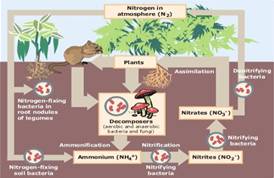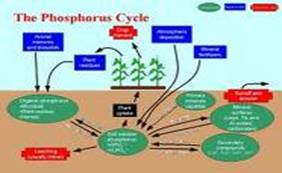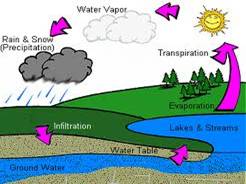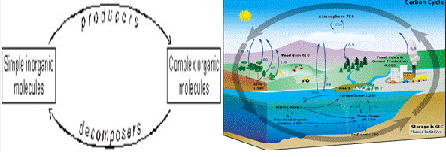Introduction to Biogeochemical cycle
What is biogeochemical cycle?
In ecology a biogeochemical cycle is a pathway by which a chemical element or molecule moves through both biotic and abiotic compartments of Earth.

Biotic is the biosphere and abiotic includes the rocky areas named lithosphere, the air around us named atmosphere, and water around the world named hydrosphere
When compared to organisms the inorganic nutrients cycle are more and also enter into the atmosphere, hydrosphere, and even lithosphere.
The chemicals cycle through both the biological and the geological world, the overall cycles are called as biogeochemical cycles.
Each chemical has its own unique cycle, but all of the cycles do have some things in common.
The residence Time
The length of time a chemical is held in an exchange pool or a reservoir is the oceans are a reservoir for water, while a cloud is an exchange pool. Water may reside in an ocean for thousands of years, but in a cloud for a few days at best.
The biotic community
The biotic community includes all living organisms. This community may serve as an exchange pool and also serve to move chemicals from one stage of the cycle to another.
For instance, the trees of the tropical rain forest bring water up from the forest floor to be evaporated into the atmosphere.
4 most important Eco cycles
• Water cycle
• Carbon (and oxygen) cycle
• Nitrogen Cycle
• Phosphorous Cycle


Nitrogen Cycle & Phosphorous Cycle


Water Cycle & Oxygen Cycle
Material Cycles in Ecosystems
 The matter cycles between the biotic environment and in the abiotic environment. Simple inorganic molecules are assimilated from the abiotic environment by producers and microbes, and built into complex organic molecules.
The matter cycles between the biotic environment and in the abiotic environment. Simple inorganic molecules are assimilated from the abiotic environment by producers and microbes, and built into complex organic molecules.
These organic molecules are passed through food chains and by decomposers they eventually returned to the abiotic environment again as simple inorganic molecules. There would be no nutrient cycling and no life without either producers or decomposers.
Two groups of decomposers
Detrivores
• Animals that eat detritus
• (Such as earthworms and woodlice).
• Digest much of the material
• Break plant tissue into much smaller pieces with a larger surface area making it more accessible to the saprophytes.
• Assist saprophytes by excreting useful minerals such as urea, and by aerating the soil.
Saprophytes
• Also known as decomposers
• Microbes (fungi and bacteria)
• Live on detritus.
• Digest it by extracellular digestion, and then absorb the soluble nutrients.
• Can completely break down any organic material.
Want to know more details about biogeochemical cycles? Click here to schedule a live help with an eTutor!
About eAge Tutoring
eAgeTutor.com is the premium online tutoring provider. Using materials developed by highly qualified educators and leading content developers, a team of top-notch software experts, and a group of passionate educators, eAgeTutor works to ensure the success and satisfaction of all of its students.
Contact us today to learn more about our guaranteed results and discuss how we can help make the dreams of the student in your life come true!